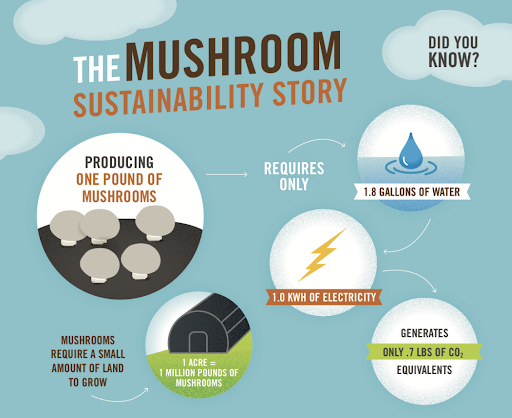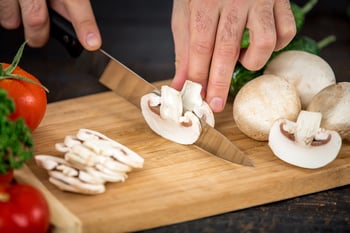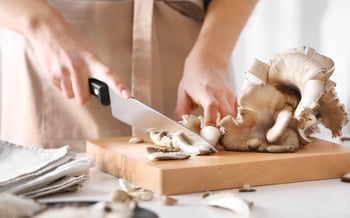On a stroll through the woods, you may stumble upon some wild mushrooms. While, indeed, Mother Nature has been producing fungus for centuries, you may be surprised to learn that commercial mushroom growers rarely grow their shrooms outdoors.
In order to mass-produce edible mushrooms year-round, we use rows and stacks of mushroom-growing beds indoors. The fungi grow in the trays in large climate-controlled buildings to conserve space and energy.
Curious to learn more about the wonderful growing process of your favorite edible mushrooms? Here’s a look into how mushrooms are grown here at Monterey.
1. Preparing the Compost
Like any plant or animal, fungi need a well-suited environment to thrive. Mushrooms like rich compost with nitrogen and other organic materials to grow robust and strong.
Here at Monterey, we prepare the perfect compost for our mushrooms over about a 20-day period, sourcing supplies from agricultural industries like hay, manure, and other compostable materials to nourish our fungi.
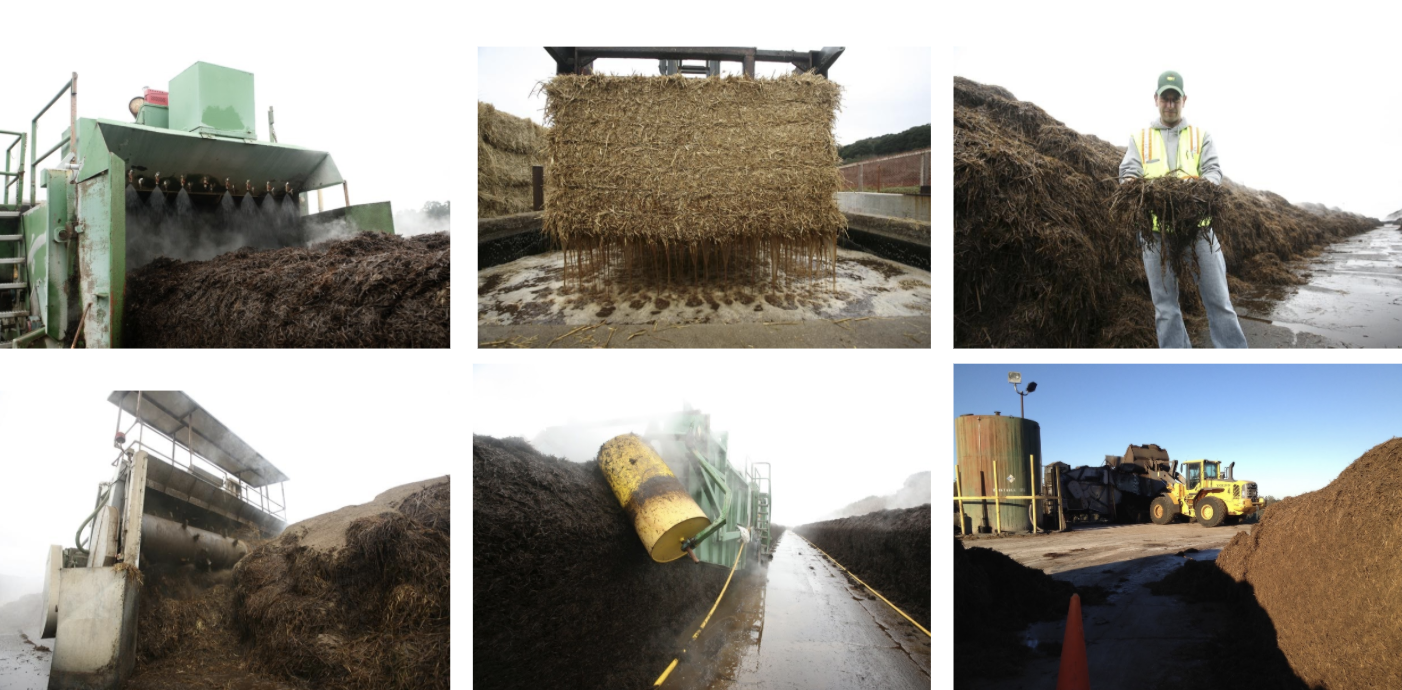
Once our compost is made, it’s then pasteurized to reduce or eliminate the bad microbes like insects, and competing fungi and bacteria. This process also conditions and finishes the composting process and prepares it for the mushroom spawn (AKA the “mushroom seed”).
As a general rule at Monterey, we treat our compost at 140°F for a minimum of 30 minutes, but different growers will source different composting ingredients and treat at various temperatures and time spans.
Fun(gi) Fact!
It’s important to note that not all mushroom growers are “certified organic,” even if naturally grown in rich compost. Organically labeled mushrooms must be approved by an independent organic certifier like CCOF— and sourcing in composting plays an important role in separating organic varieties from conventionally-grown.
2. Spawning
Here’s where a bit of science comes into play! Much like you would prepare plant seeds for planting, we use “spawn” to “seed” our compost.
In the spawn-production process, mycelium from a mushroom culture is placed onto steam-sterilized grain. Over time, the mycelium completely grows through the grain, becoming “spawn.”
It’s mixed in our compost and carefully monitored for about 15 days.

3. Casing
After the spawning period, we’re ready to give our mushroom beds a spongy layer which supplies the mushrooms with water throughout their growing cycle. We apply about an inch and a half thick layer of peat moss and lime to the top of the mushroom bed. This acts as a water reservoir for the spawn underneath the compost, giving them the water they need to grow properly. Afterall, a mushroom is more than 95% water.
4. Pinning
After the initial hard work, we wait. Gradually, mushrooms begin to push up through the compost casing layer and form little pinheads.
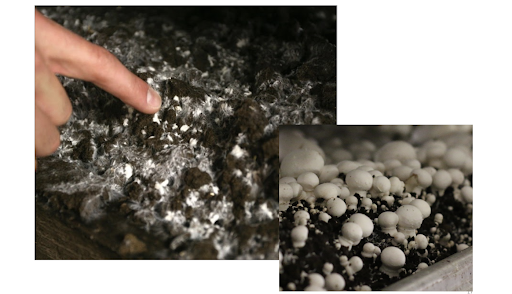
Our tiny fungi continue to grow for another 10 days until they reach maturity and are ready to be harvested.
5. Harvesting
Over the next 20 days, after our mushrooms begin reaching maturity, we hand-pick them as each and every mushroom becomes ready based on size and quality.
After all of our mushrooms on the stacked bed are collected, this compost is depleted of important nutrients and needs to be replaced. Many farmers and landscapers pick up our spent compost for reuse.
We’re Proud of our Sustainability
As you can see from the stats below, mushrooms are a relatively sustainable food to grow compared to other fruits and vegetables or livestock.
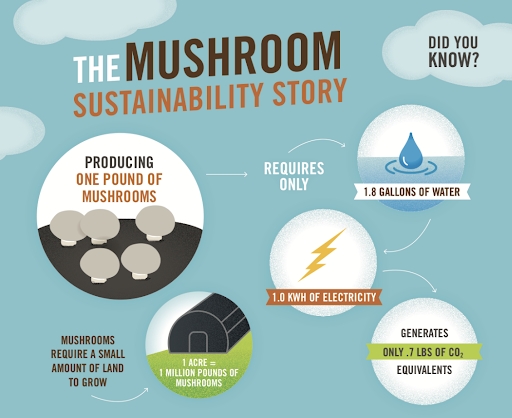
Growing one pound of mushrooms only requires 1.8 gallons of water and 1.0 KWH of electricity— very low numbers compared to many vegetable and livestock production requirements.
Growing High Vitamin D Mushrooms
Not all commercially-grown mushrooms contain vitamin D like many wild mushrooms do. That’s because mushrooms become a source of vitamin D only when exposed to sunlight; the artificial light used to grow most mushrooms indoors doesn’t cut it.
Here at Monterey, we want our mushrooms to be as nutritious as possible, which is why we devised a proprietary light system that mimics natural sunlight.
Curious to learn more about the benefits of sneaking vitamin D into your diet? Download our Everything You Need to Know about High Vitamin D Mushrooms ebook for facts about this important nutrient and which foods will help achieve your Daily Value of D2.
Learn More About How to Get Our High Vitamin D Mushrooms On Your Shelves:

